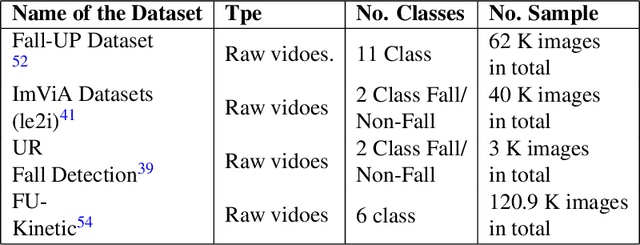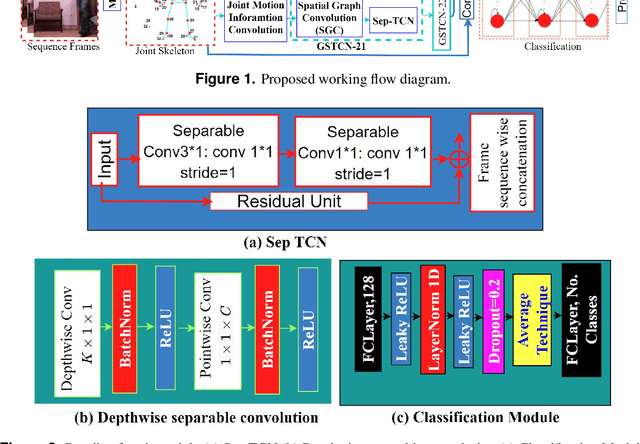Rei Egawa1
Computer-Aided Fall Recognition Using a Three-Stream Spatial-Temporal GCN Model with Adaptive Feature Aggregation
Aug 22, 2024



Abstract:The prevention of falls is paramount in modern healthcare, particularly for the elderly, as falls can lead to severe injuries or even fatalities. Additionally, the growing incidence of falls among the elderly, coupled with the urgent need to prevent suicide attempts resulting from medication overdose, underscores the critical importance of accurate and efficient fall detection methods. In this scenario, a computer-aided fall detection system is inevitable to save elderly people's lives worldwide. Many researchers have been working to develop fall detection systems. However, the existing fall detection systems often struggle with issues such as unsatisfactory performance accuracy, limited robustness, high computational complexity, and sensitivity to environmental factors due to a lack of effective features. In response to these challenges, this paper proposes a novel three-stream spatial-temporal feature-based fall detection system. Our system incorporates joint skeleton-based spatial and temporal Graph Convolutional Network (GCN) features, joint motion-based spatial and temporal GCN features, and residual connections-based features. Each stream employs adaptive graph-based feature aggregation and consecutive separable convolutional neural networks (Sep-TCN), significantly reducing computational complexity and model parameters compared to prior systems. Experimental results across multiple datasets demonstrate the superior effectiveness and efficiency of our proposed system, with accuracies of 99.51\%, 99.15\%, 99.79\% and 99.85 \% achieved on the ImViA, UR-Fall, Fall-UP and FU-Kinect datasets, respectively. The remarkable performance of our system highlights its superiority, efficiency, and generalizability in real-world fall detection scenarios, offering significant advancements in healthcare and societal well-being.
 Add to Chrome
Add to Chrome Add to Firefox
Add to Firefox Add to Edge
Add to Edge